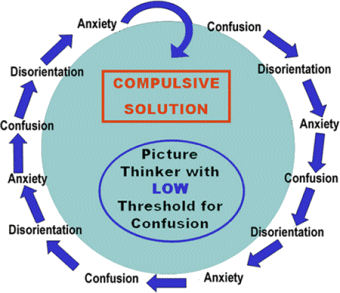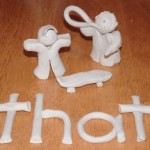The Cause of Dyslexia: Anatomy of a Learning Disability

- The individual encounters an unrecognized stimulus.
This could be a word (written or spoken), symbol, or object that is not recognized. - The lack of recognition causes a feeling of confusion.
- Confusion naturally and automatically stimulates or triggers disorientation.
The individual uses disorientation to mentally examine the stimulus in an attempt to bring about recognition and resolve the confusion. - Disorientation produces false sensory perceptions.
The different views and perceptions the individual is examining mentally are being registered in the brain as actual perceptions. - The disorientation and resulting false perceptions brings about the assimilation of incorrect data.
- The incorrect data causes the individual to make mistakes.
The individual cannot recognize the incorrect data as incorrect because it is registered in the brain as actual perception. - The mistakes cause emotional reactions.
No one likes to make mistakes. The individual is simply experiencing a human reaction. - Emotional reactions bring about a condition of frustration.
The frustration is a result of the cumulative effects of the mistakes and emotional reactions. - Compulsive solutions are created or adopted to solve the mistakes.
A solution will be a method of knowing something or a method of doing something. It will have worked at least once, and it will be compulsive. These solutions usually begin to appear around age eight or nine. Now instead of the confusion triggering a disorientation, it will trigger the compulsive solution.
The disability aspect of a learning disability is composed of the compulsive solutions the individual acquires. These compulsive solutions are what disable the learning process.
To effectively unravel this sequence, the underlying reasons for the need to formulate and adopt compulsive solutions must be addressed. These are disorientations and the feelings of confusions that trigger them.
Because disorientation and confusion are both internal and subjective responses, the individual, himself or herself, is the only one who can truly do something about it.
Davis Orientation Counseling gives these individuals a way to recognize, control, and effectively deal with their disorientations and eliminate the false perceptions.
Davis Symbol Mastery provides a way to resolve the confusions so that the compulsive solutions are no longer necessary.



